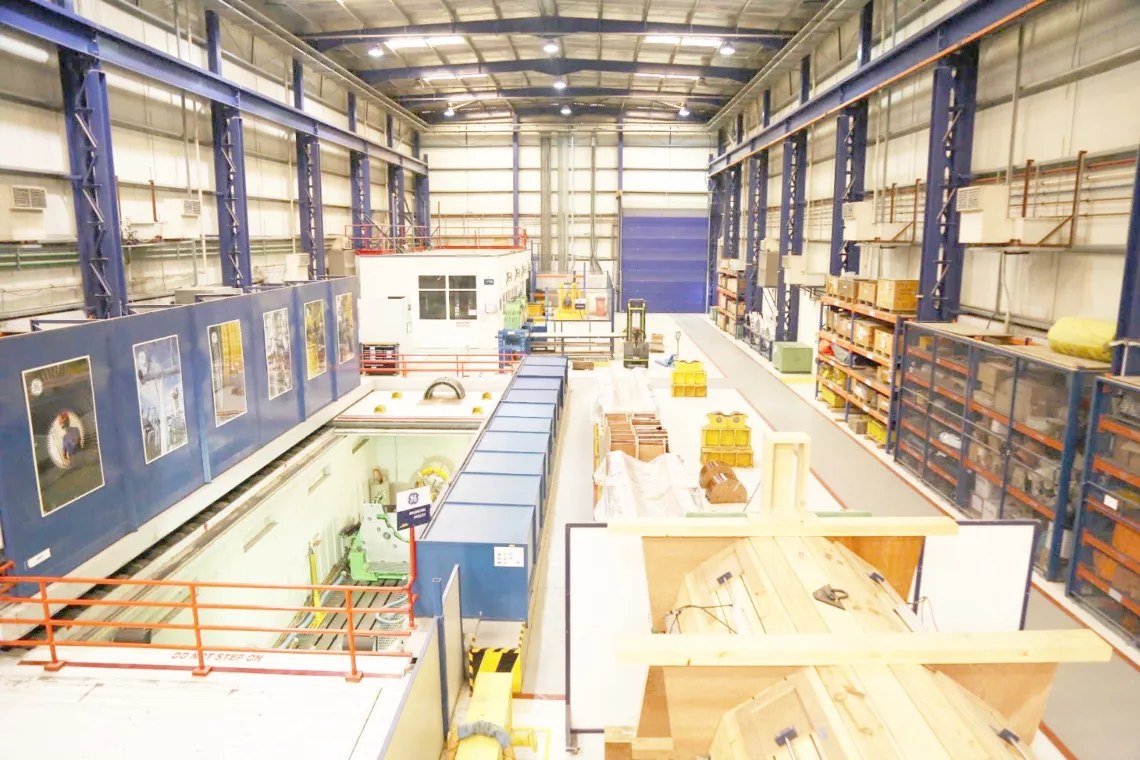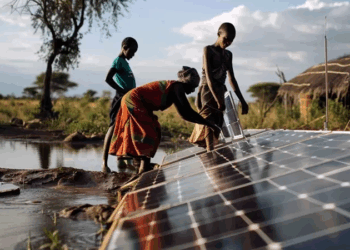Power grid glitches in Nigeria which has defied precipitous interventions has resulted in collapse of the grid more than 200 times in the last nine years, regularly resulting in widespread blackouts.
The grid had collapsed twice in March 2022 within 48 hours which was attributed to many factors.
Some of these include insufficiently trained personnel, deficiency in local manufacturing, poor utility performance, theft of grid equipment, weather, gas supply, insufficient funding and the age of grid infrastructure.
Sunday Oduntan, the Executive Director, Research and Advocacy of the Association of Nigerian Electricity Distribution Companies (ANED), told our correspondent that the problem with the country’s grid system is because it is radial in nature and lacks flexibility such that when anything happens along the line there will be total collapse.
The Nigerian national electricity grid is a network of generation companies, distribution companies and the Transmission Company of Nigeria, he said and where there is gap in supply and transmission the grid suffers collapse.
Nigeria’s electricity generation mix is made up mostly of gas combined cycle plants followed by gas open cycle and at the lower end of the contribution scale are large hydropower plants and tiny portion from solar PV.
However, respite appear in the horizon, following a level of intervention consideration by General Electric, GE, which has invested massively in the country’s fragile power sector.
With an advanced Monitoring and Diagnostic Center, M&D, located in Dubai, which is one of its leading power generation equipment monitoring facilities, Kenneth Oyakhire, Executive Director, Services for GE Gas Power Sub Saharan Africa, SSA, said extending its services in Nigeria will go a long way to address grid collapse and stabilise the system.
Oyakhire, told some Nigerian journalists on tour of the companies state-of-the art facilities in Dubai, that the centers experts work with customers to increase uptime while reducing operations and maintenance expenses.
To affirm its competence more than 950 power producing utilities use the M&D Center’s monitoring services for over 6,000 power plant assets around the world.
Every day the Center receives over one million data points per second coming fr m thousands of sensors attached to monitored assets.
Our Correspondent reports that by providing a real time view of assets data, the Center enables more effective, collaborative trouble-shooting with experts, enhancing he ability to forecast and prevent power outages through predictive maintenance alerts and providing customized solutions.
Unfortunate aspect of the situation is a consistent blame game by the operators.
The Electricity Generation Companies (GenCos), on its part attributed the incessant collapse of national power grid to excessive volatile load by steel mills, weak and old infrastructure by the Transmission Company of Nigeria (TCN) and the unavailability of most transmission lines.
According to reports, Nigeria’s available power generation capacity fell by 981.8 megawatts between 2015 and August 2022 despite the over N1.51trillion intervention in the sector by the federal government since the current administration came on board in 2015.
This came as the national grid collapsed 98 times under the present regime.
A document on Power Generation Trend (2013 – August 2022), from the Association of Power Generation Companies, the umbrella body of electricity producers, showed that while available power generation capacity was 6,616.28MW in 2015, it dropped to 5,634.47MW as at August this year.
Equally, the total power generation capacity loss for the sector between 2015 and August 2022 rose to N1.76trillion, as operators and experts decried the sorry state of the industry since it was unbundled in November 2013.
As a background, the national power grid, a network of electricity transmission lines connecting generating stations to loads across the entire country, is designed to operate within certain stability limits in terms of voltage (330kV+5 per cent) and frequency (50Hz+5 per cent).
Whenever the grid operates out of these stability ranges, it becomes unstable; power quality decreases and leads to wide-scale supply disruptions, resulting in grid collapse and blackouts.
While maintaining a stable grid frequency of 50Hz requires a sustained balance between the amount of electricity fed into the electricity grid and the amount of electricity off-taken by end-users, since it is not economically optimal to store electricity in large quantities over a long period, the System Operator (SO) ensures that the frequency is sustained at all times within a tolerance threshold.
According to Sunday Oduntan, spokesman of Electricity Distribution Companies (DisCos), the national grid is designed to function under controlled limits to ensure stable grid operations but in some cases exceeding the limits leads to instability and often leads to collapse.
The Transmission Company of Nigeria (TCN), he said is supposed to allocate the load to the distribution companies based on demand information received from the National Control Centre. This ensures that there is no mismatch between power supply and demand to avoid national grid system collapse.
In some situations, the amount of electricity supplied to the grid is lower than the electricity demand and when this occurs, an automatic load shedding plan is activated, but if this fails, the generators switch off one after another until there is a complete collapse of the national grid, he explained.
In Nigeria, the system mismatch occurs frequently because demand is regularly beyond available power allocated to distribution companies at certain periods and this is in addition to the high transmission and distribution losses.
Although the transmission company often attempts to bring the mismatch under control, it doesn’t always succeed. In some instances, sensitive generating units trip as they cannot cope with additional loads. If cascaded tripping continues, the whole power grid eventually loses supply.
He said a key solution to the recurring problem which mostly occurs at the transmission level is deployment of technology.
However, Oyakhire, said GE is bringing the latest technology to support operations and reduce malfunctioning assets that could easily trigger failure.
Essentially, GE’s investment in the M&D Center is part of its commitment to drive the digital transformation of the power sector and leverage data and insights to support today’s dynamic energy market.
Joseph Anis, CEO and President GE Gas Power, Europe, Middle East and Africa, EMEA, said, “It is critical to have asset visibility 24/7 and Make data driven decisions so we can ultimately serve the community better by meeting their Electricity needs more reliably.”
Supporting Energy Transition
GE has also indicated key interest in helping Nigeria achieve its energy transition drive.
Globally, electricity and heat production account for up to 40 per cent of carbon dioxide emissions and there are still up to 770 million people in the world without reliable access to power and the demand for electricity continues to grow.
Reducing carbon emissions from the power sector will play a critical role in addressing climate change.
GE notes that as efforts move up to reach net zero carbon emissions ambition there can be no doubt that the world needs to invest at scale and With speed in new renewable energy projects
Unfortunately it observed that these investments are not occurring fast enough, pointing that renewable energy is expected to account for less than 50 per cent of total global electricity supply in 2040 and the challenge at hand is not as simple as solving for sustainability.
Anis, declared that efforts should be made to address he energy trilemma to achieve more reliable, affordable and sustainable power, while energy demand continues to rise.





